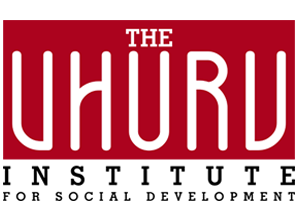Wild animals have destroyed over 3000 acres of food crops in Nwoya district in the last six months
NWOYA – In Nwoya, wild animals have destroyed more than 3000 acres of food crops in the last six months.
The most affected areas are Lii sub-county where farmers lost 787 acres of food crops, followed by Anaka sub-county with 632. Other areas include; Koch Goma sub-county where farmers lost 456 acres, Purongo sub-county with 487 and Got Apwoyo losing 652 acres of food crops.
The wild animals include; elephants, baboons, buffalos and warthogs among others.
Now, the government through the Ministry of Tourism, Wildlife and Antiquities and Uganda Wildlife Authorities (UWA) have earmarked Shs 700m for the most affected parishes in the five sub-counties of Nwoya.
In an interview with our reporter, the Minister of State for Tourism Wildlife and Antiquities, Martin Magara Bahinduka says, 95% of the money which the district will receive before the end of the year shall be channeled to support communities who have been most affected while 55 will be given to both the district and the sub-counties for monitoring purposes.
Previously, the government would give the money to the district and the district would plan for the utilization of the funds, something both the locals and some local government leaders disagree on its impact.
Bahinduka says, the money had accrued for the past two financial years due to inactivity during the Covid19 lockdown.
According to Bahinduka, most times districts would spend more than 70% in projects that don’t directly support the affected communities.
For example, in Nwoya district, several community halls have been constructed and more than 200 goats supplied to the community; an idea that the community claim was inadequate support compared to the losses they have suffered in the hands of wild animals.
Justine Odong Ajaji, the LCIII Chairperson Lii sub-county in Nwoya district that hosts some invasion hotspots disagrees with the new arrangement. He says, for years UWA and government have been sending money under revenue sharing to communities which has been yielding minimal impact.
“UWA and government have been sending money under revenue sharing to the district which was then channeled to the sub-counties and communities. Some of this money was used to buy goats, pigs among other livelihood supports to the communities but if you go and check now, you won’t find anything,” Odong notes.
Odong wants the government to fund projects such as construction of community access roads, schools and health centres that would have a long-lasting impact to the community members.
“We don’t have access roads even for the rangers to come and drive back the wild animals when they invade community areas. When you look at schools, there are areas where learners are forced to move between 20kms to 30 kms daily to access primary schools, leave alone health centers. According to me, such monies would be used to fund projects which will bridge such huge gaps so that access to schools and health services is improved,” Odong observed.
“What if the money is given to the communities, and they invest the money back to growing food crops and animals again come to destroy them, what would we be doing to our community members?” Odong wondered.
Benson Otto, the LCIII Chairperson of Purongo sub-county Nwoya district says, they have initially constructed a community primary school (Atwomo community School) which supports the education of children from Patira and Pawatomero as well as the construction of a multipurpose community hall which is yet to be completed.
According to Otto, following the latest directive, the community members have formed groups where they have identified 9 tree planting projects, which would protect and prevent the wild animals from crossing to community land, 6 piggery and 3 bull patterning projects for livelihood support to their respective households.
“Much as we would want to see our communities develop, we need their lives to improve. For us, we want the funds to benefit the groups we have already identified, so that they can move away from engaging in activities which can easily be destroyed by wild animals especially elephants other than planting trees which has left many of them in losses,” Otto explains.
Stephen Lakony, a resident of Gony Cogo village in Lii sub-county agrees with Justine Odong Ajaji, the LCIII Chairperson Lii sub-county arguing that, in most cases UWA rangers have found excuses in lack of access roads for their failure or delay in coming to drive away the wild animals from community areas.
“For me, opening more access roads so that the rangers can access us is very important. We would also use the same road to access local markets to sell our items,” says Lakony.
James Opiru, another resident of Gony Cogo, who’s son was recently attacked and injured by stray elephants from Murchison Falls Park, wants the revenue used for compensation since government’s compensation fund has delayed.
“We continue to suffer here, money is sent to the district and sub-counties in the names of supporting us, who are the most affected. Why can’t you use the money to compensate us for the financial losses we have incurred in our gardens, and treating our people?” Opiru wonders.
https://thecooperator.news/nwoya-locals-leaders-reject-trenches-demand-for-electric-fence/
Buy your copy of thecooperator magazine from one of our country- wide vending points or an e-copy on emag.thecooperator.news
The post Wild animals have destroyed over 3000 acres of food crops in Nwoya district in the last six months appeared first on The Cooperator News.
